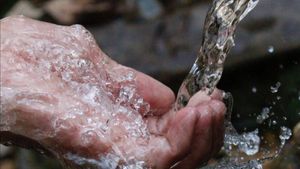The Ministry of Public Works and Public Housing (PUPR) has accelerated the completion of the construction of the Sepaku Semoi Dam and the Sepaku River Intake in North Penajam Paser Regency, East Kalimantan to supply raw water needs to the State Capital (IKN) of the Archipelago.
"The dam, which is located in Sepaku District, will later be projected as infrastructure for providing raw water needs and flood control in the IKN Nusantara area," said Acting Director General (Dirjen) of Water Resources (SDA) of the Ministry of PUPR Jarot Widyoko in his statement in Jakarta, quoted from Antara, Monday, March 20.
After the construction of the Sepaku Semoi Dam and the Sepaku River Intake, the raw water pump is then prepared in stages. In 2023 a raw water pump is prepared from a dam with a capacity of 300 liters/second.
As for the Sepaku River intake raw water pump, in the early stages, 4 pumps were prepared each with a capacity of 600 liters/second.
"As many as 3 pumps and one pump will be operated as a backup," said Jarot.
Head of the Kalimantan IV River Basin Center (BWS) Harya Muldianto said that the construction of the Sepaku Semoi Dam has a progress of 86.56 percent and is targeted to be filled with water (impounding) in June 2023.
"The Sepaku Semoi Dam can supply raw water needs of 2,500 liters/second, as much as 2,000 liters/second for IKN Nusantara and the remaining 500 liters/second for Balikpapan. Apart from dams, the Ministry of PUPR is also completing the Sepaku River Intake with a capacity of 3000 liters/second." said Harya as well.
He said, the Sepaku River Intake was built with the concept of a Movement Dam (obermeyer) and has a width of 117.2 meters of dams, and a height of 2.3 meters of dams.
"The Sepaku River Intake was built to provide raw water of 3,000 liters per second which we are working on from October 2021, to April 2023. Currently, the physical progress is 92.23 percent," he said again.
The work includes the body of the dam (main dam), the wall of the dam, the feeder canal, mud bags, downstream and upstream walls, apron work, the olak pond, and the work of Building Information Modelling (BIM).
The English, Chinese, Japanese, Arabic, and French versions are automatically generated by the AI. So there may still be inaccuracies in translating, please always see Indonesian as our main language. (system supported by DigitalSiber.id)













